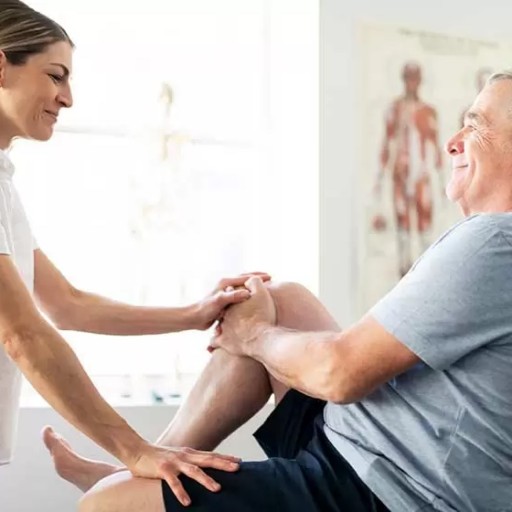Joint protection for the elderly
As they age, the bodies of the elderly gradually undergo various changes, and joint problems become one of the important factors affecting their quality of life.
The health of joints is directly related to whether the elderly can move freely and enjoy life. Therefore, it is crucial to understand and master the methods of protecting joints for the elderly.
1. Recognize the importance of joint health
Joints are the hub of human movement, and they enable us to complete various daily activities. For the elderly, healthy joints are the key to maintaining independent living ability. When there are problems with joints, it not only causes pain and discomfort, but also may restrict movement, causing the elderly to become more dependent on others and affecting mental health.
2. Problems that are prone to occur in the joints of the elderly
Osteoarthritis: This is a common degenerative joint disease that manifests as joint pain, swelling, stiffness and limited movement.
Osteoporosis: Reduced bone density makes joints more susceptible to injury.
Joint wear: Long-term use and aging can cause the cartilage on the surface of the joints to gradually wear out.

3. Methods to protect joints
Reasonable exercise: Choose low-intensity exercises suitable for the elderly, such as walking, swimming, cycling, etc. These exercises can strengthen the muscles around the joints, improve the stability of the joints, and promote blood circulation.
When exercising, pay attention to gradual progress to avoid excessive fatigue and injury. In addition, regular joint range of motion training, such as stretching and rotation, can also help maintain joint flexibility.
Maintain a healthy weight: Being overweight can put extra pressure on joints, especially the knee joints. The elderly should control their weight and reduce the burden on their joints through a reasonable diet and proper exercise.
A balanced diet, including adequate intake of protein, vitamins and minerals, helps maintain muscle and bone health.
Pay attention to posture: Maintain a correct sitting, standing and sleeping posture, and avoid bending, hunching or twisting the body for a long time. Good posture can reduce pressure on joints and prevent deformation and injury. When resting, choose a suitable mattress and pillow to maintain the natural curvature of the spine.
Diet conditioning: Eat more foods rich in nutrients such as calcium, vitamin D, collagen, such as dairy products, soy products, fish and shrimp, vegetables and fruits. These foods help to enhance the health of bones and joints. If necessary, calcium and vitamin D can be supplemented according to the doctor's advice.
Keep warm: Cold joints can easily induce pain and inflammation, so the elderly should pay attention to keeping warm, especially in cold seasons. You can wear warm clothes and protective gear to prevent cold joints.
Avoid injuries: Be careful and cautious in daily life to prevent accidents such as falls. Keep the home environment clean and safe, and install facilities such as handrails and anti-slip mats. When doing physical activities, take protective measures, such as wearing wrist guards and knee pads.
Regular check-ups: Regular physical examinations to detect joint problems in time and take appropriate treatment measures. The professional advice and guidance of doctors are essential for joint health.

4. Precautions in daily life
Reasonable use of assistive devices: such as crutches, walkers, etc., can help the elderly maintain balance and reduce joint pressure. When needed, these assistive tools should be used without hesitation.
Avoid maintaining the same posture for a long time: Sitting or standing still for a long time will make the joints stiff, and the body should be properly moved and the posture should be changed.
Pay attention to the protection of joints: When doing housework or exercising, pay attention to protecting the joints to avoid injuries caused by excessive force and improper posture.
Maintain an optimistic attitude: A positive attitude helps relieve pain and discomfort and improve the quality of life. The elderly can stay in a good mood by participating in social activities and cultivating hobbies.

5. Misconceptions about joint care for the elderly
Ignoring early symptoms: Some elderly people believe that joint pain is a normal phenomenon of aging and ignore early symptoms. This may lead to worsening of the condition and delay treatment.
Over-reliance on drugs: Although drugs can relieve pain, they cannot be completely relied on to solve the problem. Long-term use of drugs may cause side effects and cannot fundamentally improve joint health.
Not paying attention to rehabilitation training: Rehabilitation training is of great significance for restoring joint function and improving quality of life, but some elderly people think it is dispensable.
Joint health is essential for the elderly. By taking reasonable protective measures and maintenance methods, the elderly can effectively prevent and alleviate joint problems and improve their quality of life.
At the same time, we must correctly understand the importance of joint health and avoid falling into maintenance misunderstandings. Let us pay attention to the joint health of the elderly and create a comfortable and healthy living environment for them.
OTHER NEWS
-
- How to Choose The Right Insurance for You
- By Little Crystal 24 Apr,2023

-
- Understanding Short-Term Life Insurance: A Quick Guide!
- By Wendy 04 Sep,2023

-
- How to invest during a recession?
- By Little Grapes 25 Sep,2023

-
- Unveiling the Charm of Stardew Valley: A Journey Through its Colorful Characters
- By Little Grapes 29 Jan,2024

-
- How do I buy a Home and Invest in the United States?
- By Little Grapes 24 Apr,2023

-
- Safeguarding Your Rental: A Comprehensive Guide to Renters Insurance!
- By Wendy 04 Jul,2023

-
- How do I buy a Home Without a Real Estate Agent?
- By Wendy 24 Apr,2023

-
- Do you Know About Business Credit Cards?
- By Wendy 24 Apr,2023

-
- Here's What you Need to Know About Balance Referrals
- By Little Grapes 24 Apr,2023

-
- Unveiling the World of Credit Card Bonuses: Finding the Best Offers!
- By Little Grapes 09 Jun,2023

-
- Getting Started With Credit Cards ----- Takes you Into the World Where Spending Money is Making Money
- By Little Grapes 24 Apr,2023

-
- Salvaging Credit Cards with Low Credit Scores: Tips and Strategies for Financial Recovery!
- By Wendy 24 Apr,2023

 1
1 1
1